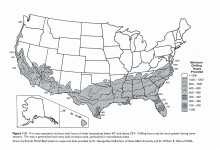Stone Fruit: Diversifying Your Fruit Portfolio

In the financial world, investors range from risk takers to those who are risk averse. Some may invest heavily in high-risk opportunities that have the potential for a large return on investment in the short-term. Others, however, may invest modestly in low-risk opportunities that provide a stable return over the long-term. A good general principle for investing is to have a diversified portfolio so that you don’t have “all of your eggs in one basket.” You know what happens when the basket is dropped, right?
Whether you are a large-scale wholesale shipper, a small-scale retailer, or something in between, it is likely that you have experienced “feast or famine.” Natural disaster (i.e., freeze, drought, hail storm, etc.) could strike, there could be an oversupply in the market, or numerous other circumstances may severely limit your profitability from one year to the next. What are some potential ways to limit risk and expand opportunity through having a diversified “fruit portfolio?”
Diversifying Your Crops
First, consider diversifying the fruit crops you grow. The “local” food movement is here to stay, I believe. Are you equipped to provide a diverse supply of high-quality, delicious and nutritious morsels to local markets all season long?
Depending on the USDA cold hardiness zone and typical chill hours accumulated where you live (see figure below), there may be numerous fruit crops that you can consider. I encourage folks to consider locally adapted, native fruits whenever possible. Often these are reliable producers, they are relatively easy to grow, and they have minimal pest control requirements. In the Southeastern U.S., for example, these include blueberry, blackberry, muscadine grape, and pawpaw. Others exotics (originating outside the U.S.) that also perform well in the Southeastern U.S. include fig and Asian persimmon. In other regions, raspberries or table grapes may be suitable.
If you consider crops that you haven’t grown before, my advice would be to do your homework first and start small scale. Learn how to grow the fruit and determine the market potential before getting too big too fast.
Although there is a lot of scientifically based information available online, there is also misinformation. Consider the source (Cooperative Extension Service, nursery catalogue, box store brochure, etc.) of the information and whether it is appropriate for your region. Some questions to ask yourself include: Does the fruit have sufficient cold hardiness to be grown in my area? Is the chill hour requirement right? Does it require a pollenizer? Is there a specific soil pH requirement? When will fruit become ripe? What is the optimal spacing? Are there niche opportunities (i.e., Asian persimmons for the large local Asian population)? Can it provide value-added products (cider, preserves, ice cream, etc.) to expand retail sales in the off-season?
Cover Up
Second, consider the possibility of growing fruit in simple, energy-efficient protected cultivation structures (i.e., hoop houses or high tunnels). As part of the 2008 Farm Bill, there is a three-year initiative in 38 states called “Know Your Farmer, Know Your Food.” Through USDA’s Natural Resources Conservation Service (NRCS) Environmental Quality Incentives Program (EQIP), cost-share funding exists to assist farmers in establishing high tunnels. There is actually an online video describing the program and demonstrating the construction of hoop houses at the White House (youtube.com/watch?v=07vtMJgp0no).
Last spring, I spent two weeks in China observing the protected cultivation of horticultural crops. It is estimated that there are currently more than 3 million acres in protected cultivation. A blog of my trip, including more than 300 photos, can be seen at: growingproduce.com/events/inperson/?storyid=3650. As the innovative local Chinese farmers can attest, protected cultivation structures don’t need to be elaborate or expensive. They offer the benefit of reducing risk from cold weather, restricting rainfall to reduce disease pressure and eliminate rain-induced fruit cracking, and they can advance harvest from four to eight weeks. This can increase market value five-fold! The protected cultivation houses can also be used to extend the market season in the fall. In China, I saw high-quality peaches, nectarines, plums, apricots, cherries, grapes, and strawberries being grown this way.
So how about you? Are you considering growing different fruits to expand your market offerings? Or, are you investigating the potential of high tunnel production? I know of one U.S. grower who is providing organically grown, high-quality donut peaches produced indoors to gourmet restaurants and markets for $6 per pound. Another grower is using high tunnels to supply fresh strawberries to local markets during the fall through Christmas for $6 per pound. Are there potentially profitable niches close to home that you have yet to tap into? How diverse is your fruit portfolio?










